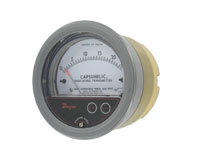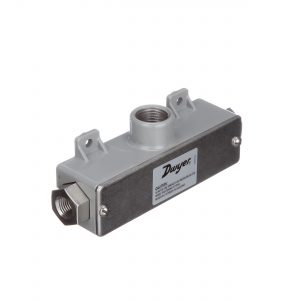Question: What is the difference between true and calculated wet/wet transmitters?
Answer: The main function of a differential pressure transmitter is to take two pressure readings into a “positive” and “negative” port, and then generate a discreet signal based upon the difference between the two readings. Most of the time you will see these signals as current (0-20ma, or 4-20mA) or a voltage (2-10v, 1-5v, 0-10v, or 0-5v). These signals would then be taken into a data logger, PLC, or any other sort of receiver to display and control based on what the transmitter is currently seeing in real time.

A true wet to wet differential pressure transmitter is the most common type of meter seen in the industry today. This type of transmitter uses one sensor in the middle of the device to track the change in differential pressure. This will help keep your readings accurate by only having one point of accuracy loss. One of Dwyer’s most popular transmitters of this type is the Capsuhelic® Wet/Wet Differential Pressure Transmitter, Series 631B.

A calculated wet to wet differential pressure transmitter is one of the newest styles designed. They implement the use of two separate sensors: one in the “positive” port and one in the “negative” port. This device uses logic built into the circuitry to calculate differential pressure readings. Unlike its counterpart, the sensor faces twice the accuracy loss. Static pressures in your lines can be much larger when using a calculated wet/wet transmitter, as there is twice the durability when using two ports instead of one. Three of Dwyer’s most popular calculated wet/wet differential pressure transmitters include the Wet/Wet Differential Pressure Transmitter, Series 629C; Wireless Hydronic Balancing Kit, Series 490W; and Differential Pressure Transmitter, Series 629HLP.
By comparing the benefits of each type of wet/wet differential pressure transmitter with your application requirements, you will be able to make an informed decision on which best suits your needs.

